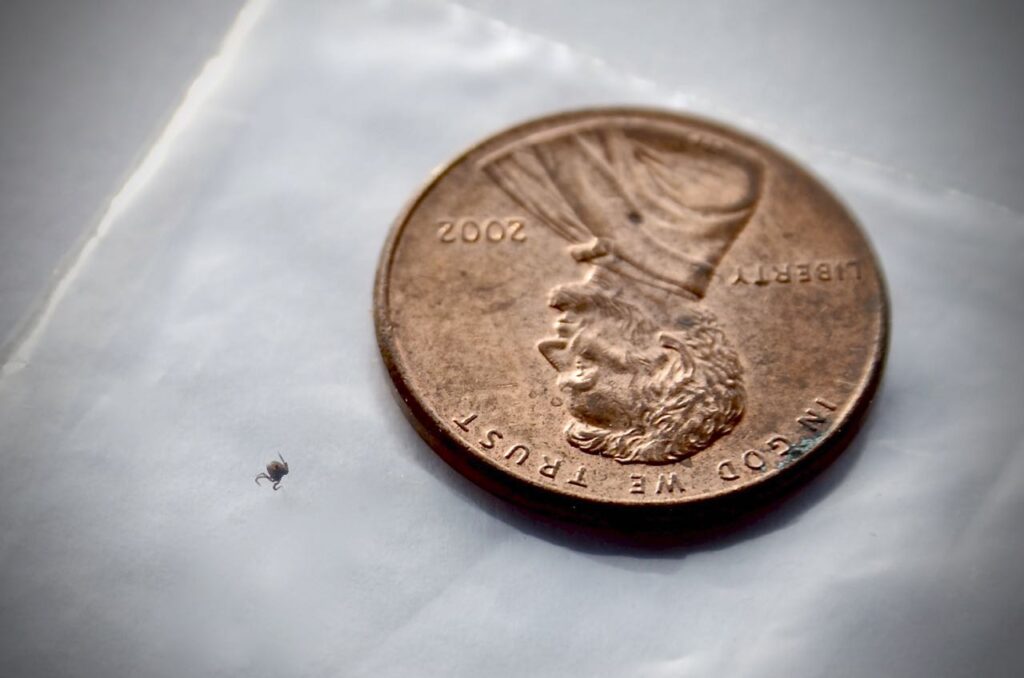Eventually, the conversation turns to ticks. Whether we are speaking with “people from away”, or multi-generation locals, the subject of tick-borne illness somehow manages to crawl into the conversation.
Whether or not this is due to a high degree of sensitivity of the topic on my part, or a desire of our friends to warn us of the very real danger lurking out there, the topic seems to be somewhere near the forefront of many folks minds. In fact, a seat-of-the-pants, non-scientific estimate indicates that every fourth or fifth person we meet has contracted some type of tick-borne illness.

After a number of years, we have learned to live with the reality, and (sort of) not let it get in the way of our lives (too much). After a few early personal encounters with the tiny buggers, we now consider ourselves older and wiser on the subject.
First off, these beasties are tiny, with a capital “T”! To illustrate, here is one that we extracted from a forearm not too long ago…

Check out how small it really is in relation to Honest Abe. You can see that this one is bagged up, and ready to be mailed off to a testing site to check it for the presence of Lyme disease, etc. It runs about $75 for the test, so it behooves us to try to avoid run-ins with this scourge altogether.
How, you may ask? Well, our regime is pretty straightforward. Anytime we go “off pavement” here in Northern New England, we suit-up. This means donning clothes that we have sent in to be treated with a permanent application of permethrin. We use a great service called Insect Shield. At their website, you can purchase pre-treated clothing, or send in your own duds. The treatments are supposed to last up to 70 washes, which is basically the life of the garment. Our own internal testing reveals that a set of work clothes we had treated was in-service between 30 and 40 washings before they were pretty much shot and threadbare, and had to be replaced.
A set of clothes basically is a shirt, a pair of pants, and just as important, a pair of socks. When we venture out to do the yard work, we are always careful to tuck our socks into our pants, since ticks will scramble upward until they encounter some tender flesh that they can dig into and begin sharing their bodily fluids with. Our treated clothing is designed to “knock down” the insects before they climb very far up the garment. It is somehow satisfying to know that we are not only repelling the insects, but also sending them to that happy hunting ground in the sky when they dare to try and latch onto us.
If we are really doing some gardening, and poking around in the brush, we also apply some DEET product to our forearms to dissuade ticks from crawling onto our hands and up our arms.
Finally, after venturing out for yard work, or hiking in the woods, we always do a thorough tick check after finishing up our outdoor activity.
One of the trade-offs to living in such a great location is the unfortunate presence of disease-carrying ticks.
There are dangers wherever you live.
Back in California, the threat of “the big one” (earthquakes) was always in the back of one’s mind, along with a number of other common suburban and urban concerns. Thankfully, in Maine, it is relatively easy to manage the reality of living with ticks with some common sense and planning.

Leave a Reply